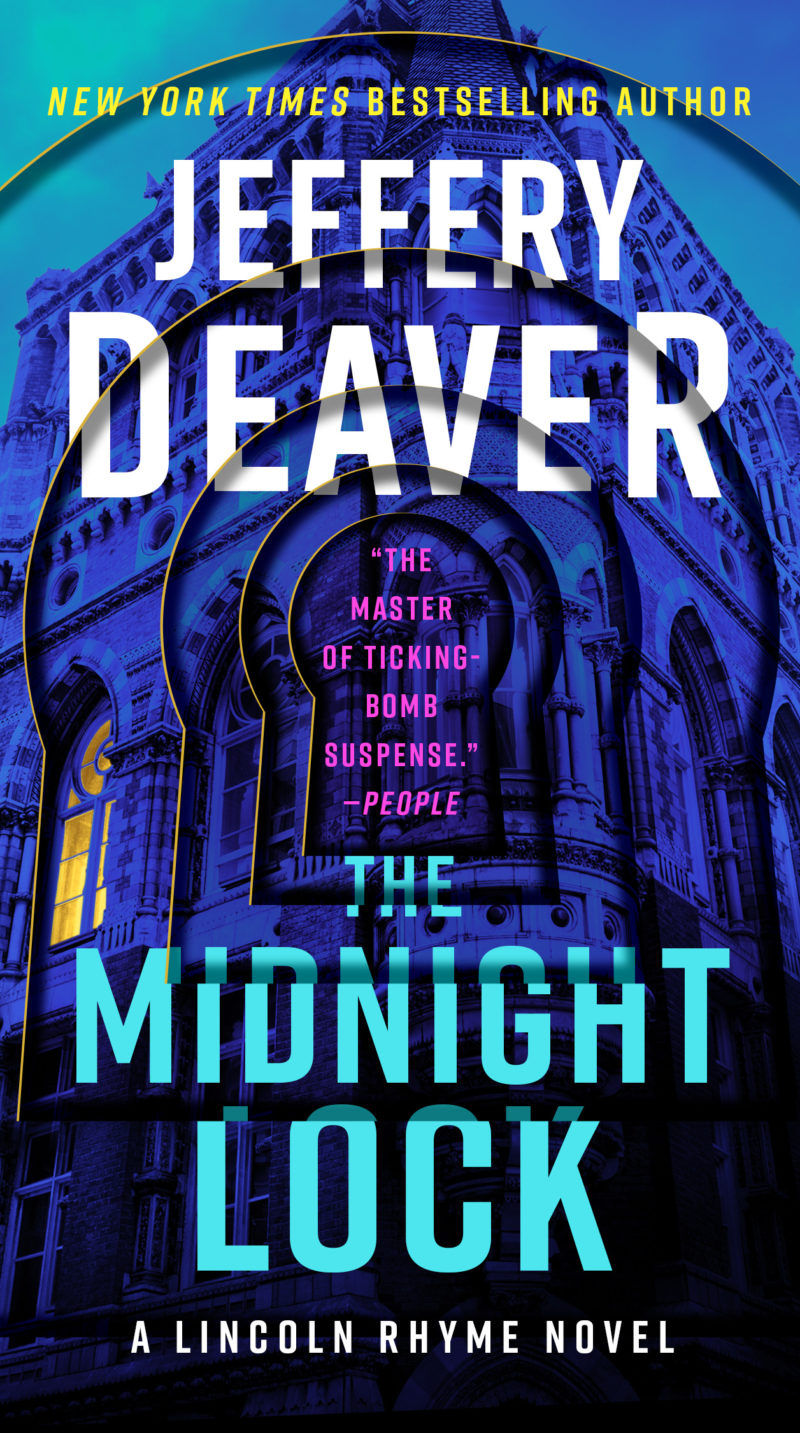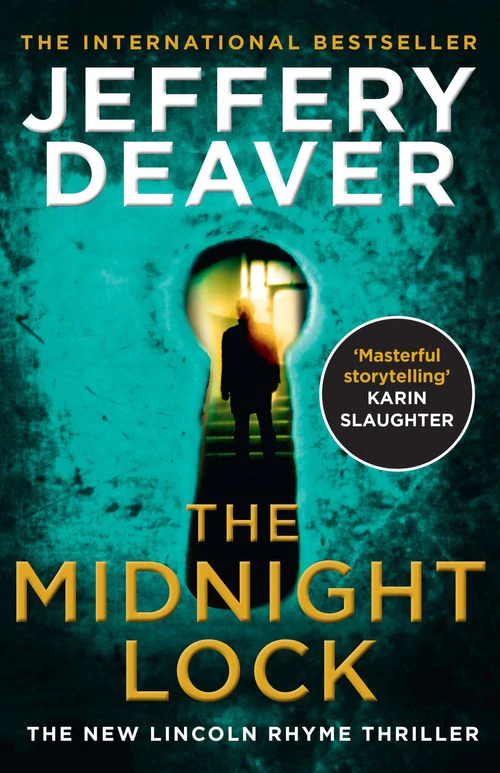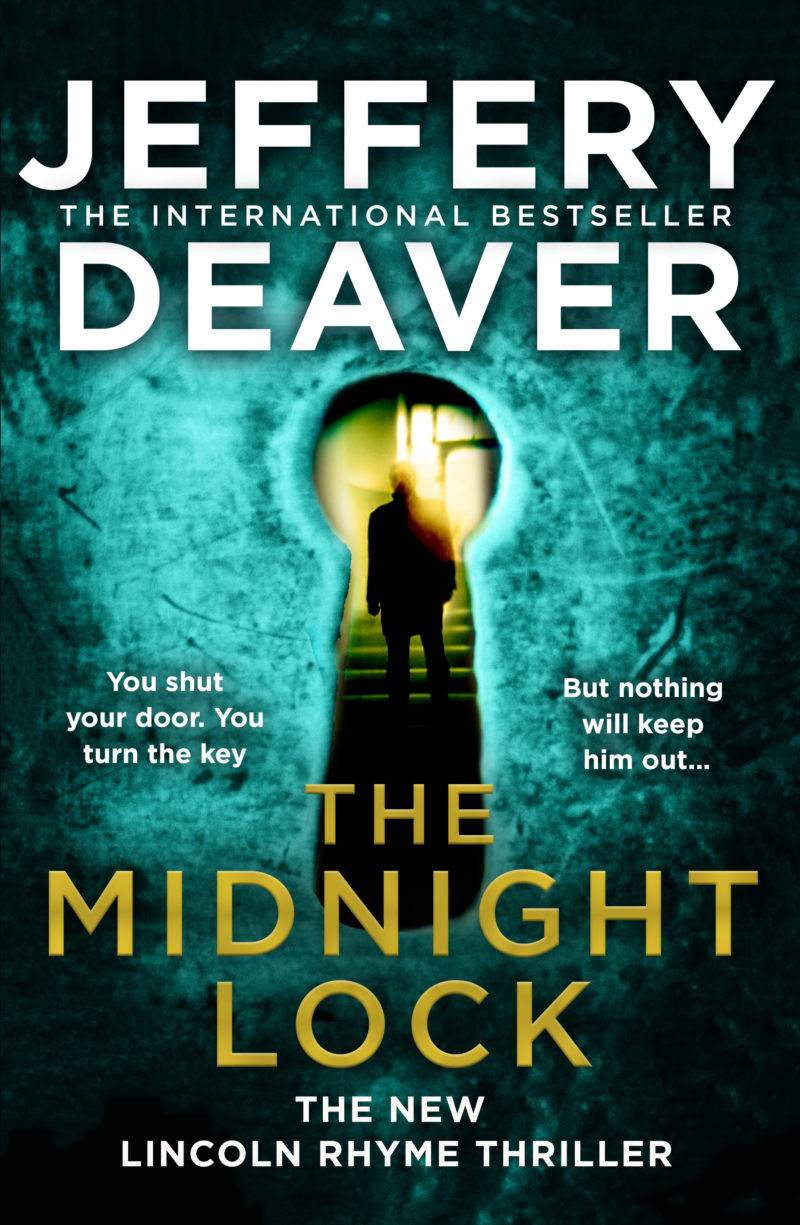The Midnight Lock Excerpt
PART ONE
CYLINDRICAL KEY
[MAY 26, 8 A.M.]
1
Something wasn’t right.
Annabelle Talese, though, couldn’t quite figure out what that might be.
One aspect of this concern, or disorientation, or mystery, could be explained by the presence of a hangover, though a minor one. She called them “hangunders”—maybe one and a half glasses of sauvignon blanc too many. She’d been out with Trish and Gab at Tito’s, which had to be one of the strangest of all restaurants on the Upper West Side of Manhattan: a fusion of Serbian and Tex‑Mex. Fried cheese with beans and salsa was a specialty.
Big wine pours too.
As she lay on her side, she brushed the tickling, thick blond hair away from her eyes and wondered: What’s wrong with this picture?
Well, for one thing, the window was open a few inches; a May breeze, thick with the gassy‑asphalt scent of Manhattan, eased in. She rarely opened it. Why had she done so last night?
The twenty‑seven‑year‑old, who had dabbled at modeling and was now content behind the scenes of the fashion world, rolled upright and tugged her Hamilton T‑shirt down, twisted it straight. Adjusted her silk boxers. Finger‑combed her curls.
She swung her feet over the edge of the bed, feeling for her slippers.
They weren’t where she’d kicked them off last night before climbing under the blankets.
All right. What’s going on?
Talese had no phobias or OCD issues, except one: New York City streets. She couldn’t help but picture the carpet of germs and other unmentionable critters that populated the city’s asphalt—and which got tracked into her apartment, even when, as she did every day, she stowed her shoes in a carton by the door (and insisted her friends do the same).
She never went barefoot in the apartment.
Instead of the slippers, though, the dress she’d worn yesterday, a frilly, floral number, lay spread out beneath her dangling feet.
The front hem was drawn up, almost to the décolletage, as if the garment were flashing her.
Wait a minute . . . Talese had a memory—more hazy than distinct—of tossing the garment into the hamper before her night‑time routine.
Talese qualified her narrative now. The slippers weren’t where she thought she’d left them. The dress wasn’t in the hamper where she thought she’d tossed it.
Maybe Draco, the bartender, always a flirt, had been a little more generous than usual.
Was the drink count, possibly, 2.5 on the scale? Careful, girl. You need to watch that.
As always, upon waking, the phone.
She turned toward the bedside table.
It wasn’t there.
No landline for her, her mobile was her only link at night. She always kept it near and charged. The umbilical, attached to the wall plug, was present, but no phone.
Jesus . . . What’s going on?
Then she saw the slippers. The pink fuzzy things were across the room, each on either side of, and facing, a small wooden chair. It had been scooted closer to the bed than she normally kept it. The slippers were facing the chair in a way that was almost eerily obscene— as if they’d been worn by somebody whose legs were spread and who was sitting on a lap.
“No,” Talese gasped, now spotting what was on the floor beside the chair: a plate with a half‑eaten cookie on it.
Her heart thrummed fast; her breath grew shallow. Somebody’d been in the apartment last night! They’d rearranged her clothes, eaten the cookie.
Not six feet away from her!
The phone, the phone . . . where’s the goddamn phone? Talese reached for the dress on the floor.
Then froze. Don’t! He—she figured the intruder would have been male—had touched it.
My God . . . She ran to her closet and pulled on jeans and an NYU sweatshirt, then stepped into the first pair of sneakers she found.
Out! Get out now! The neighbors, the police . . .
Fighting back tears from fright, she started out of the bedroom, then noticed that one of her dresser drawers was partially open. It was where she kept her underwear. She’d noted something boldly colorful inside.
She approached slowly, pulled it fully open and looked down. She gasped and finally the tears broke free.
On top of her panties was a page from a newspaper. It wasn’t one she read, so he would have brought it with him. Written on it, in lipstick—the shade that she favored, Fierce Pink—were three words:
Reckoning.
—The Locksmith
Annabelle Talese turned to sprint to the front door. She got about ten feet before she stopped fast.
She’d noticed three things:
One was that the butcher block knife holder, sitting on the island in the small kitchen, had a blank slot, the upper right‑hand corner, where the largest blade had rested.
The second was that the closet in the hallway that led to the front door was open. Talese always kept it closed. There was an automated switch in the frame so that when you opened the door, the bulb inside went on. The closet now, however, was dark. She would have to walk past it to get to the front door.
The third thing was that the two deadbolts on the door were turned to the locked position.
Which meant—since the man who’d broken inside had no keys—he was still here.
2
The defense attorney, approaching the empty witness stand, beside which Lincoln Rhyme sat in his motorized wheelchair, said: “Mr. Rhyme, I’ll remind you that you’re still under oath.”
Rhyme frowned and looked over the solidly built, black‑haired lawyer, whose last name was Coughlin. Rhyme affected a pensive expression. “I wasn’t aware that something might have happened to damage the oath.”
Did the judge offer a faint smile? Rhyme couldn’t see clearly. He was on the main floor of the courtroom, and the judge was considerably above and largely behind him.
The testimonial oath in court had always struck Rhyme as an unnecessary mouthful, even with the “so help you God” snipped off.
Do you solemnly swear to tell the truth, the whole truth and nothing but the truth?
Why did swearing have to be solemn? And once one affirmed the first “truth,” was there any point to the overkill? How about: “Do you swear you won’t lie? If you do, we’ll arrest you.”
More efficient.
He now relented. “I acknowledge that I’m under oath.”
The trial was being conducted in New York Supreme Court— which, despite the name, was in fact a lower‑level court in the state. The room was wood paneled and scuffed, the walls hung with pictures of jurists from over the years, going back, it seemed, to the days of Reconstruction. The proceeding itself, however, was pure twenty‑first century. On the prosecution and defense tables were computers and tablets—the judge had a slim high‑def monitor too. There was not a single law book in the room.
Present were thirty or so spectators, most here to see the infamous defendant, though perhaps a few hoping to see Rhyme.
Coughlin, whose age Rhyme figured to be about fifty, said, “I’ll get to the substance of my cross‑examination.” He flipped through notes. Maybe there were no books, but Rhyme noted easily a hundred pounds of foolscap between the defense and the prosecution tables.
“Thank you, sir,” said the judge.
Being a criminalist, a forensic scientist aiding in criminal investigation, is only partly about the laboratory; the other aspect of the job is performing. The prosecutor needs an expert witness to present findings in an articulate way and to parry the defense counsel’s assault patiently and effectively on your conclusions. On redirect, a good prosecutor can sometimes rehabilitate a witness battered by the defense, but it’s best not to get into hard straits in the first place. Lincoln Rhyme was reclusive by nature, and loved his time in a laboratory above all, but he was not entirely introverted. Who doesn’t enjoy a little grandstanding before the jury, and sparring with the defendant’s attorney?
“You testified on direct that no fingerprints of my client were left at the crime scene where Leon Murphy was murdered, correct?”
“No, I did not.”
Coughlin frowned, looking at a yellow pad that might have contained perceptive notes or might have contained doodles or a recipe for beef brisket. Rhyme happened to be hungry. It was ten a.m. and he’d missed breakfast.
Coughlin glanced at his client. Viktor Antony Buryak, fifty‑two. Dark‑haired like his mouthpiece but bulkier, with Slavic features and pale skin. He wore a tailored charcoal gray suit and a burgundy vest. Buryak’s face was oddly unthreatening. Rhyme could picture him serving up pancakes at a church basement fundraiser and remembering every parent by name and giving the kids an extra splash of syrup.
“Do you want me to read you back your testimony?” Coughlin, who’d been hovering close to Rhyme, like a shark near chum, lifted a palm.
“No need. I remember it. I stated—under oath, I’ll just reassure you—that of the fingerprints collected at the scene of Leon Murphy’s murder, none could be identified as your client’s.”
“What exactly is the difference?”
“You said I testified that your client left no fingerprints at the scene. He might very well have left a million of them. The evidence collection team simply didn’t recover any.”
Coughlin rolled his eyes. “Move to strike.”
Judge Williams told the jury, “You’ll disregard Mr. Rhyme’s response. But try again, Mr. Coughlin.”
Looking put out, Coughlin said, “Mr. Rhyme, no fingerprints of my client were discovered at the crime scene where the convicted felon Leon Murphy was shot, correct?”
“I can’t answer because I can’t speak to whether the victim was a convicted felon or not.”
Coughlin sighed.
The judge stirred.
Rhyme said, “I agree with your ‘were discovered’ part of that sentence.”
Coughlin and Buryak shared a look. The client was taking this better than his attorney. The lawyer returned to his table and glanced down.
Rhyme regarded the jury and found more than a few looking his way. They’d be curious about his condition. Some defense attorneys, he’d heard, privately complained about his presence, given that he was a quadriplegic, testifying from a wheelchair—which, they believed, generated sympathy for the prosecution.
But what could he do? Wheelchair bound he was. Criminalist he was.
Rhyme’s eyes circled to the defendant. Buryak was a unique figure in the history of organized crime in the region. He owned a number of businesses in the city, but that wasn’t how he made most of his money. He offered a unique service in the underworld, one that had probably cost more lives than any other organized crime outfit in New York’s exceedingly criminal history.
The People of the State of New York v. Viktor Buryak, however, had nothing to do with that. This was about a single incident, a single crime, a single murder.
Leon Murphy had been shot to death a week or so after a meeting with the manager of a warehouse that Buryak owned. Murphy was a psychotic wannabe gangbanger who fancied himself a descendant of the Westies, the brutal Irish gang that had once ruled Hell’s Kitchen in Manhattan. Murphy had made a sales pitch offering protection to the warehouse manager.
A very bad business idea, selling that product to that consumer.
Coughlin asked, “Did you find footprints near Leon Murphy’s body? Or near where the bullet casing was found?”
“Near the body, the field was grassy, no footprints could be ascertained. Near the bullet casing, the evidence collection technicians found footprints but because of a recent rain it was impossible to determine the type of shoe.”
“So, you can’t testify that my client’s footprints were found at the scene of the crime?”
“Don’t you think that can be inferred from my prior comment?” Rhyme asked acerbically. He’d learned that nobody cares about badgering attorneys. That’s what they’re paid for.
“Mr. Rhyme, does the NYPD forensics unit routinely collect DNA at crime scenes?”
“Yes.”
“And did you discover any of my client’s DNA at the scene where Leon Murphy was killed?”
“No.”
“Mr. Rhyme, you analyzed the bullet that killed Mr. Murphy, correct? That is, the lead slug?”
“Yes.”
“And you analyzed the shell casing too?”
“That’s correct.”
“And, once more, what caliber was that?”
“Nine‑millimeter parabellum.”
“And you testified that the lands and grooves, that is the rifling of the barrel, suggest that the gun was a Glock seventeen.”
“A Glock definitely, a model seventeen most likely.”
“Mr. Rhyme, did you or any investigators you were working with check firearms records in any state or federal databases with regard to my client?”
“Yes.”
“And does or did he own a Glock, specifically a model seventeen?”
“I have no idea.”
“Explain, Mr. Rhyme.”
“He might own a dozen.”
“Your Honor,” said Coughlin. He sounded slightly wounded that Rhyme was treating him so unfairly.
Was Viktor Buryak on the verge of smiling?
“Mr. Rhyme.” The judge was growing weary.
“He asked if he owned a Glock, and I testified that I have no idea. Which I don’t. I can testify that the record shows that, in New York State, he owns no legally registered Glocks.”
ADA Sellars said, “Your Honor, the defense is straying from Captain Rhyme’s contribution to the case, which is not firearms purchase records. It relates solely to his expertise in physical evidence.”
Coughlin said, “Let me lay this foundation, Your Honor. It will be clear in a moment where I’m going.”
Rhyme looked at his keen eyes and wondered what that destination might be.
“Proceed . . . for the moment.”
“Mr. Rhyme, to recap, could you confirm that my client’s DNA was not found at either the site of the body or site of the shell casing?”
“Correct.”
“Or on the body or shell casing.”
“That’s true.”
“And his footprints and fingerprints were not found at either place?”
“Correct.”
“And no fibers or hairs that could be traced to him were found there?”
“Correct.”
“And state and federal records do not indicate that he owns or owned a Glock semiautomatic pistol?”
“Correct.”
“In fact, the only forensic connection between the murder of Leon Murphy and my client is a few grains of sand on the ground where the victim was found.”
“Six,” Rhyme countered. “More than a few.”
Coughlin smiled—it was directed at the jury. “Six grains of sand.”
“Please explain again how that sand connects my client to the murder.”
“The sand was unusual in composition. It was made up of calcium sulfate dihydrate, with silicon dioxide, along with the presence of another substance, C12H24, about three quarters saturated hydrocarbons and one quarter aromatic hydrocarbons.”
“About that other substance, as you call it. Could you translate for us, please?”
“It’s a particular grade of diesel fuel.”
“But why does this connect my client to the scene?”
“Because samples were taken from the street in front of his driveway in Forest Hills, Queens, and similar sand was found there. Control samples taken from where the body was found revealed no such sand.”
“Did the sand taken from my client’s home match that at the scene where Leon Murphy was murdered?”
Rhyme hesitated. “The word ‘match’ in forensic science means identical. Fingerprints match. DNA matches. There are some chemical mixtures that are so complex that they could be said to match. In forensics, barring those situations, we use the word ‘associated.’ You could also say very, very similar to.”
Coughlin repeated, “‘Very, very . . .” I see. So, then you can’t testify that the grains of sand at my client’s home matched the grains of sand at the crime scene.”
“I just said—”
The attorney snapped, “Can you say the grains of sand from my client’s house matched the six grains of sand discovered at the crime scene?”
After a long moment, Rhyme said, “No, I cannot.”
Coughlin brushed a hand through his sturdy hair. “Almost done, Mr. Rhyme. But before you leave, I’d like to ask you just a few more questions.” A fast look to the jury, then back. “And these are about you.”
_ _


